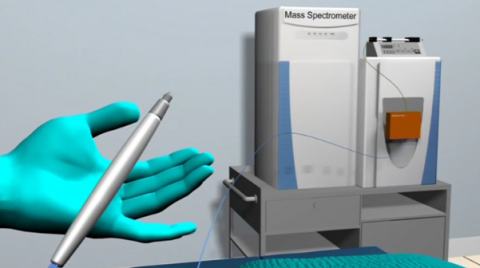
TEXAS, United States (Reuters) — A team of US researchers have developed a way of accurately spotting cancer within seconds, allowing surgeons to make sure they remove all and only cancerous tissue.
The device, called a MassSpec Pen, takes only 10 seconds to distinguish between healthy and cancerous tissue with 96 percent accuracy, according to the team at the University of Texas at Austin.
“A ‘MassSpec Pen’ is a non-destructive hand-held device which can be used to do realtime diagnosis of human tissue to help the doctor to do the margin analysis,” said research associate Jialing Zhang, who led the experimental work.
The system applies a droplet of water to sample the metabolites produced by all tissue, healthy or cancerous, which form a set of biomarkers unique to each type of cancer.
The device drives the water droplet into an instrument called a mass spectrometer, which detects thousands of molecules as a molecular fingerprint.
“We have some tubing that delivers a control water droplet to the tip of the pen and then this water is used to extract lipids, metabolites and proteins from the tissue sample and those lipids can be characteristic of the tissue type, so if you have cancer you know you’re going to get a different composition. Then this water droplet is delivered into the mass spectrometer with the different tubing that we have have and then this information can be analysed,” said research assistant Marta Sans Escofet.
That molecular fingerprint is then compared with a database of 253 samples of normal and cancerous tissues of the breast, lung, thyroid and ovary, the team reported in the journal Science Translational Medicine.
A surgeon simply holds the disposable plastic tip of the pen against the patient’s tissue, triggers the automated analysis using a foot pedal to release a droplet of water, and waits a few seconds for the words “Normal” or “Cancer” to appear on a computer screen.
“What we have now can take anywhere between 30 minutes to 2 weeks and with the ‘MassSpec Pen’ we can get information in about 10 seconds so it’s quite an improvement,” Escofet said.
The team have filed U.S. patent applications for the technology and are working to secure world-wide patents.








